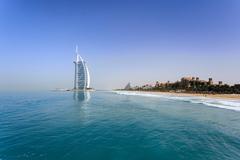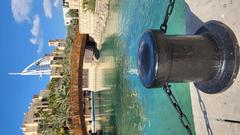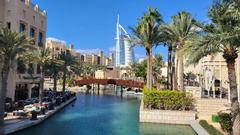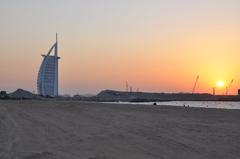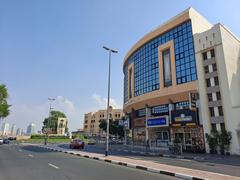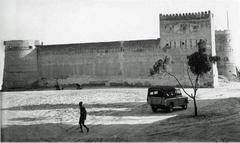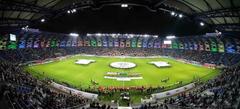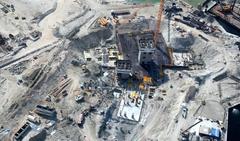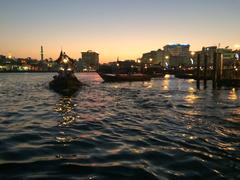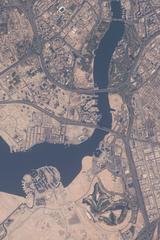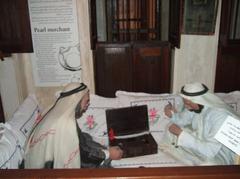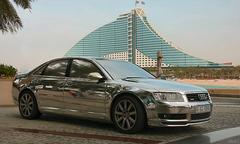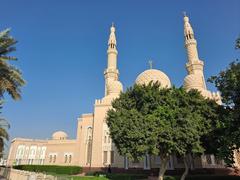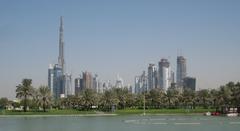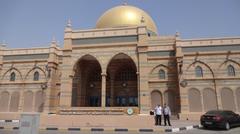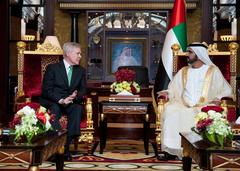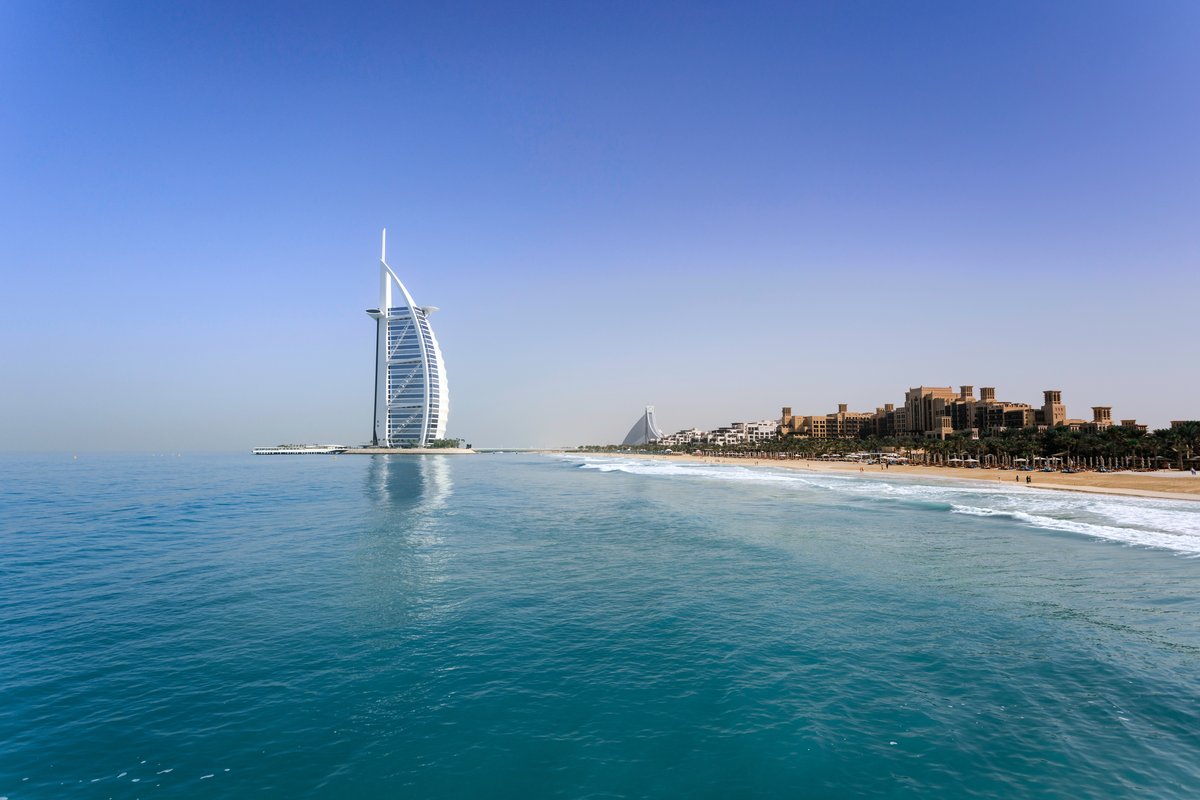
Burj Al Arab Visiting Hours, Tickets, and Dubai Historical Sites Guide
Date: 14/06/2025
Introduction
The Burj Al Arab stands as a global icon of luxury and architectural brilliance, epitomizing Dubai’s transformation from a regional port city into a cosmopolitan hub of innovation, luxury, and cultural heritage. Its sail-shaped silhouette, set atop a man-made island off Jumeirah Beach, is instantly recognizable and synonymous with the emirate’s ambitious vision (Parisien Magazine; Britannica). Since opening in 1999, the Burj Al Arab has redefined hospitality standards, drawing visitors eager to experience its exclusivity, artistry, and world-class service.
This comprehensive guide details everything you need to know about visiting the Burj Al Arab: from its historical and cultural significance to practical information on visiting hours, tickets, travel tips, accessibility, and nearby attractions. Whether you’re captivated by its architectural splendor, its role in Dubai’s urban story, or are planning an unforgettable luxury experience, this guide will help you make the most of your visit (Thrillophilia; ComingSoon.ae).
Table of Contents
- Origins and Historical Context
- Architectural Vision and Design Philosophy
- Signature Features and Innovations
- Visiting the Burj Al Arab: Essential Information
- Symbolism and Cultural Significance
- Legacy and Ongoing Impact
- Sustainability and Modernization
- Frequently Asked Questions (FAQ)
- Visuals and Interactive Elements
- Plan Your Visit
Origins and Historical Context
The Burj Al Arab’s conception dates back to the early 1990s, a period of rapid development in Dubai. Sheikh Mohammed bin Rashid Al Maktoum envisioned a landmark that would put Dubai on the international map, rivaling icons like the Eiffel Tower and the Sydney Opera House (Parisien Magazine). Construction began in 1994 on a man-made island, 280 meters from Jumeirah Beach, emphasizing exclusivity and grandeur. Its completion in 1999 marked a pivotal moment in Dubai’s emergence as a premier global destination (Headout).
Architectural Vision and Design Philosophy
British architect Tom Wright, of Atkins, designed the Burj Al Arab to reflect Dubai’s maritime heritage and forward-looking ambition. The sail-shaped structure, inspired by the Arabian dhow, stands at 321 meters, making it one of the world’s tallest hotels (Parisien Magazine; Thrillophilia). The building’s unique V-shaped wings enclose a vast atrium—the tallest of any hotel worldwide—and the exterior’s reflective glass facade regulates internal temperatures while dazzling onlookers (Headout).
The interiors, designed by Khuan Chew, are a celebration of opulence, adorned with 24-carat gold leaf, Statuario marble, and hand-fixed Swarovski crystals (Headout). Each of the 202 duplex suites offers panoramic Gulf views and state-of-the-art amenities.
Signature Features and Innovations
- Helipad: Perched 210 meters above ground, the helipad has hosted high-profile events, such as tennis matches, and is a symbol of Dubai’s flair for showmanship (Headout).
- Royal Suite: The Royal Suite on the 25th floor is a highlight of the Inside Burj Al Arab tour, featuring grand décor, rotating beds, and private cinemas (Dubai Travel Guide).
- Skyview Bar and Al Mahara: Offer guests panoramic city views and an immersive underwater dining experience, respectively.
- Luxury Fleet: Rolls-Royce guest transfers and a private beach underscore the exclusivity of the guest experience (Have Fun Dubai).
Visiting the Burj Al Arab: Essential Information
Visiting Hours and Ticket Information
- Inside Burj Al Arab Tour: Daily, 09:30–20:30, with tours departing every 15 minutes. Tickets start at AED 399 for adults and AED 358 for children aged 5–12 (Bayut).
- Dining and Afternoon Tea: Reservation required; most restaurants operate between noon and 11:00 PM. Afternoon tea is typically served between 14:00 and 17:00 (ItsAllBee).
- Spa Visits: Talise Spa is open 09:00–21:00.
Note: Entry is strictly by confirmed reservation. Walk-ins are not permitted (One Mile at a Time).
Accessibility
The hotel is fully wheelchair accessible, with ramps, lifts, and staff assistance available upon request.
Travel Tips
- Book Early: Tours and dining reservations fill rapidly, especially during peak seasons.
- Dress Code: Smart casual attire is mandatory; non-compliance may result in denied entry.
- Arrival: Arrive 15 minutes before your reservation. Bring photo ID for entry (Dubai Travel Guide).
- Best Time to Visit: October–April for cooler weather; early morning or evening for the best photos (Dubai Travel Planner).
- Photography: Permitted in public areas but be discreet and mindful of privacy.
Getting There
- By Car/Taxi: About 20–30 minutes from Dubai International Airport; taxi fare from central Dubai is AED 30–50.
- Parking: Complimentary valet for guests with reservations; no self-parking (ItsAllBee).
- Public Transport: Nearest metro is Mall of the Emirates; continue by taxi.
Visitor Experience Highlights
- Atrium and Lobby: The tallest hotel atrium in the world, featuring gold-clad columns and dancing fountains.
- The Terrace: Access to pools, private cabanas, and a beach area for select guests and tour upgrades (Bayut).
- Afternoon Tea: A curated experience at the Skyview Bar with panoramic views (ItsAllBee).
Symbolism and Cultural Significance
The Burj Al Arab is more than a hotel—it is a symbol of Dubai’s transformation, ambition, and cosmopolitan identity. Its design pays homage to the emirate’s maritime heritage while projecting a vision of modernity (Britannica). The hotel’s prominence in media and tourism campaigns has made it a visual shorthand for Dubai’s economic success and global aspirations (Gulf News).
Legacy and Ongoing Impact
Often dubbed the world’s only “seven-star” hotel, the Burj Al Arab has set benchmarks in luxury and inspired other iconic Dubai projects, like the Palm Jumeirah and Burj Khalifa (Thrillophilia; Global Media Insight). Its influence extends to hospitality, design, and global tourism, serving as a beacon for innovation and excellence.
Sustainability and Modernization
The Burj Al Arab is a leader in sustainable luxury, holding Green Globe Certification. Sustainability initiatives include:
- Grey water recycling and advanced water conservation
- Comprehensive waste management and recycling
- Energy-efficient systems and eco-friendly materials
- Elimination of single-use plastics
Modern technology, such as smart room controls, contactless check-in, and high-speed elevators, ensures a seamless guest experience while supporting Dubai’s broader vision of sustainable urban development (TravelBizNews).
Nearby Attractions
Combine your visit with these nearby sites:
- Wild Wadi Waterpark: Family fun adjacent to the hotel
- Madinat Jumeirah: Traditional marketplace with shopping and dining
- Jumeirah Beach: Public beaches with stunning views
- Al Fahidi Historical Neighborhood and Dubai Museum: For a glimpse of old Dubai
Frequently Asked Questions (FAQ)
Q: Can I visit the Burj Al Arab without staying overnight?
A: Yes, with a confirmed reservation for dining, spa, or a guided tour.
Q: What are the Burj Al Arab visiting hours?
A: Tours run 09:30–20:30 daily; restaurant opening hours vary.
Q: How do I buy tickets for tours?
A: Book online via the official Burj Al Arab website or authorized operators.
Q: Is the hotel accessible for guests with disabilities?
A: Yes, with dedicated facilities and staff assistance.
Q: Are children allowed?
A: Yes, children are welcome on tours and at most restaurants; Kids Club available (Bayut).
Visuals and Interactive Elements
- Images: Include high-resolution photos of the Burj Al Arab’s exterior, atrium, Royal Suite, and dining venues, with optimized alt text (e.g., “Burj Al Arab iconic sail-shaped exterior in Dubai”).
- Interactive Map: Show hotel location and proximity to major attractions.
- Virtual Tours: Embed video or 360° virtual tours showcasing architecture and interiors.
Plan Your Visit
To ensure a seamless experience, plan and book your visit well in advance:
- Download the Audiala app for real-time updates, exclusive offers, and interactive guides.
- Follow us on social media for travel inspiration and the latest news.
Internal and External Links
Summary and Call to Action
Visiting the Burj Al Arab is a unique opportunity to experience Dubai’s blend of tradition, innovation, and luxury. Its advance reservation policy ensures exclusivity, while its architectural splendor and commitment to sustainability set it apart as a global hospitality leader. Explore nearby attractions, enjoy world-class dining, and immerse yourself in Dubai’s rich cultural tapestry.
For the latest updates, special offers, and detailed guides, download the Audiala app and follow us on social media. Make the Burj Al Arab a highlight of your Dubai adventure!
References
- Exploring the Burj Al Arab: A Visitor’s Guide to Dubai’s Iconic Luxury Hotel, 2024, Parisien Magazine (Parisien Magazine)
- Burj Al Arab: Visiting Hours, Tickets, and Dubai’s Iconic Historical Site, 2024, Britannica (Britannica)
- Burj Al-Arab Visiting Hours, Tickets & Insider Tips for Dubai’s Iconic Hotel, 2024, ItsAllBee (ItsAllBee)
- Burj Al Arab Visiting Hours, Tickets, and Sustainability Initiatives: A Complete Guide to Dubai’s Iconic Hotel, 2024, TravelBizNews (TravelBizNews)
- Inside Burj Al Arab Tour, 2024, Bayut (Bayut)
- The Story Behind the Jumeirah Burj Al Arab, 2024, ComingSoon.ae (ComingSoon.ae)
- How Jumeirah Burj Al Arab Became a Symbol of Dubai’s Ambition, 2024, CNTraveller (CNTraveller)
- Burj Al Arab’s Incredible History: From Ambitious Dubai Project to International Icon, 2024, Gulf News (Gulf News)
- Burj Al Arab Tour and Experiences, 2024, Dubai Travel Guide (Dubai Travel Guide)
- Burj Al Arab’s Role in Dubai’s Tourism Growth, 2024, UAEVisa (UAEVisa)
- Dubai Tourism Statistics, 2024, Global Media Insight (Global Media Insight)
